Text
A post that lists everything I wrote when I worked at the Maryland State Archives
#maryland state archives#md archives#md state archives#maryland#archives#revolutionary war#biographies#soldiers#internet archive#wordpress
1 note
·
View note
Photo
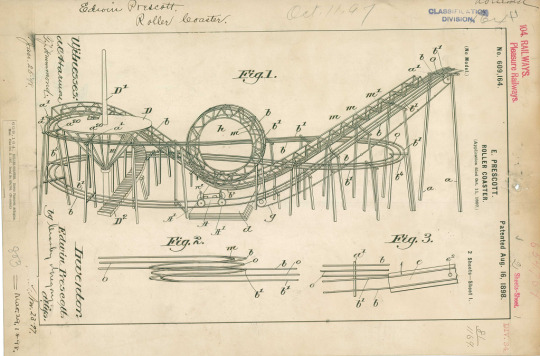
Edwin Prescott’s Roller Coaster, patented August 16, 1898.
Record Group 241: Records of the Patent and Trademark Office
Series: Utility Patent Drawings
Image description: Drawing of a roller coaster, showing a single car at the start of the track, which includes a high hill and a loop-de-loop.
#archivesgov#August 16#1898#1800s#patents#patents and trademarks#rollercoaster#extremely safe nineteenth-century inventions
127 notes
·
View notes
Text
Cabin Fever! How the log cabin shaped American history 🪓
Cabins have long been a symbol of the American frontier spirit, a testament to self-reliance and ingenuity. They played a vital role in the early settlement of the United States and have become an enduring symbol of the nation's pioneering past.

Early Colonial Period
Cabins were an essential form of shelter for European settlers in the 17th and 18th centuries. Built from logs with notched corners, cabins were relatively simple to construct, allowing settlers to establish shelter quickly. This design, known as the log cabin, became synonymous with frontier life.


Abraham Lincoln's Birthplace
One of the most famous cabins in American history is the one where Abraham Lincoln was born on February 12, 1809, in Hardin County, Kentucky. The symbolic importance of Lincoln's log cabin birthplace reflects the "log cabin to White House" narrative that emphasizes his rise from humble beginnings. Though the authenticity of the existing cabin at the Abraham Lincoln Birthplace National Historical Park is disputed, it still stands as a symbol of American perseverance and determination.

Western Expansion
As pioneers moved westward, log cabins continued to play a vital role in American expansion. The log cabin's simplicity made it an ideal choice for settlers needing to build shelter quickly. Many of these cabins became the nucleus of burgeoning communities.

Thoreau's Cabin at Walden Pond
In the 19th century, cabins also began to symbolize a return to nature and simple living. Henry David Thoreau's cabin at Walden Pond, where he lived from 1845 to 1847, became an emblem of deliberate, contemplative living. Thoreau's experiment was not only a personal retreat but also a critique of modern society, and his cabin remains an iconic representation of the American transcendentalist movement.

Presidential Retreats
Cabins have also served as retreats for American presidents. Camp David, officially known as the Naval Support Facility Thurmont, is the country's premier presidential retreat, featuring rustic cabins. It has been used by presidents for rest and diplomatic meetings since Franklin D. Roosevelt's administration.
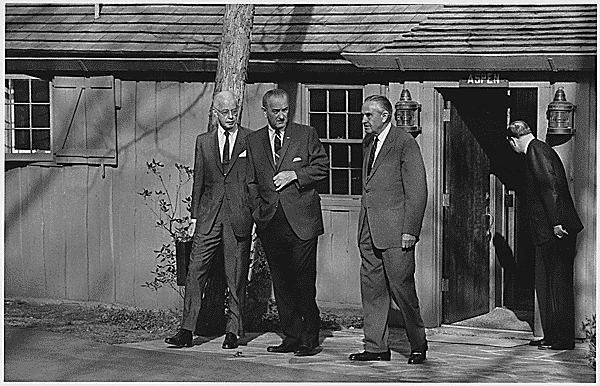

Cabins in Modern Culture
In modern times, cabins continue to symbolize simplicity and a connection to nature. They are often associated with vacation retreats and are emblematic of a desire to return to a less complicated way of life. Check out the hundreds of photographs of cabins in our Catalog!
273 notes
·
View notes
Text
1 note
·
View note
Text
A pdf-version of my post which talks about records erasure, digitization, and 1990s Hollywood films.
#1990s films#records erasure#digitization#pdfs#hollywood#hackers#the net#my fellow americans#internet archive#wordpress#1990s
2 notes
·
View notes
Text
0 notes
Text
A post written in April 2019 which talks about Robert Caro's flawed ideas on archival research, archival digitization, and digital archives.
#robert caro#presidential libraries#libraries#archival research#archives#digital archives#digitization#wordpress#internet archive
0 notes
Text
This is a March 2020 post which talks about the Pleasant Rest Cemetery in Towson, access limits, and the power of community.
#pleasant rest cemetery#towson#black people#cemeteries#black history#community#access limits#familysearch#census
0 notes
Text
Arrogant curators, a pine-cone shaped vault, and a magical scroll in "Tangled" [Part 2]
Continued from part 1
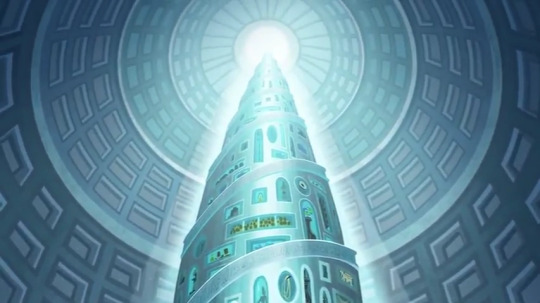
Inside of the Spire shown in "Keeper of the Spire"
As for the Spire, it is an ancient museum atop a winding mountain. It contains many artifacts and is a "massive pine-cone-shaped structure covered with light blue and medium blue rocks", with a spiraling staircase inside, with various artifacts decorating the walls. Calliope, for her part, is not a professional with "expertise in the management of records of enduring value", the first definition of an archivist in the aforementioned dictionary. But, she is "an individual responsible for records of enduring value", i.e. the artifacts in the Spire.
Reprinted from my Wading Through the Cultural Stacks WordPress blog. Originally published on May 17, 2023.
Furthermore, she is not a records manager, records analyst, or records officer. She also is not what the aforementioned dictionary defines as a librarian: "an individual responsible for acquiring, providing access to, and managing collections of published materials." On the other hand, she fulfills common characteristics of an archivist. The recent A*Census II stated that 66% of those surveyed are working as archivists or memory workers, and noted that commonly those surveyed work with textual archival records such as documents, manuscripts, photographs, and objects. [1] The survey further said that almost half of White people felt included in the profession, compared to 25% of BIPOC (Black, indigenous, (and) people of color). In terms of Calliope, she is in line with 71% of archivists who are women and 84% who are White. She likely is straight or heterosexual as well, just like 69% of archivists who identified as such in the survey.
A few fan fiction writers have mentioned Calliope. In various chapters of LokoteiBex's "Sunshine", she is described as knowledgeable, charming, and noted as a street musician, and cursed by Gothel so she doesn't sense Rapunzel. In Chapter 5: "The Keeper of the Spire", the fifth chapter of green_tea_and_honey's 14-chapter work, "Beyond the Corona Walls", she describes herself as the Keeper of the Spire, saying she was "entrusted wardship over the Spire’s artifacts", with a sworn duty to "prevent these items from falling into the wrong hands...[or] protect the outside world from them". She also adds:
"The Spire’s Vault holds some of the rarest, most abstruse artifacts from all over the world...Oh no, silly! It’s at the top of the mountain in a vault called the Spire...Kirlock, Protector of the Spire! It is I, Calliope! The, uh, Apprentice of the Keeper of the Spire!” [3]
In others, it is noted that Calliope has an annoying voice, is caught by Raps after almost being hurt, gives a message to Raps about Cass trying to seize a magical artifact. She remains cocky, is shown as a guise for Cass to get the key she needs, has magical powers, and helps translate a scroll. Then there are those when she is noted as egocentric or good at examining artifacts. [2]
Examining fanfiction depictions of archivists or characters who act like archivists is important. As Sam Cross put it in August 2019, websites like AO3 (where these works were published) are "becoming the norm and the archival community needs to look to them as part of the future of our profession", and argues that fan-created community archives, like AO3, are "worthy of out attention and investment." Unfortunately, apart from the aforementioned chapter by green_tea_and_honey, she doesn't get as much character depth as she should. Most writers seem to pass her off as annoying, precocious, and arrogant. While that falls in line with the show's canon, it doesn't tell as much about her as a person, her motivations, or anything like that. Instead, her role is more like the video game, Mass Effect 3, when characters use an ID to access the archives and fight within the archives itself.
Calliope's character is annoying, unlikable, and aligned with stereotypes, but this ends up being a cover in order to impress others. Her real personality is different, at least from what I have gathered. Her voice actor, Natalie Palamides, has sometimes had bit roles, apart from voicing an exaggerated masculine character named Nate in a 2020 TV special, Nate – A One Man Show. She is also a comedian and a writer, but I'm not sure that came through with her character. It doesn't seem that she posted about it on her official Twitter account, her official website, or her Instagram. Despite that, and the fact that fans of Tangled may not like her character (personally, I'm not totally sure about her), she still is worth writing about and examining, especially when it comes to her connection to archival concepts. After all, the two episodes she appears in are written by the same people. [3]
As always, comments and suggestions are welcome.
© 2022 Burkely Hermann. All rights reserved.
#spire#tangled#museums#archivy#archival studies#archival science#natalie palamides#fan fiction#census#pop culture#reviews#ao3#bipoc#whiteness#samantha cross#social media#stories
0 notes
Text
Arrogant curators, a pine-cone shaped vault, and a magical scroll in "Tangled" [Part 1]
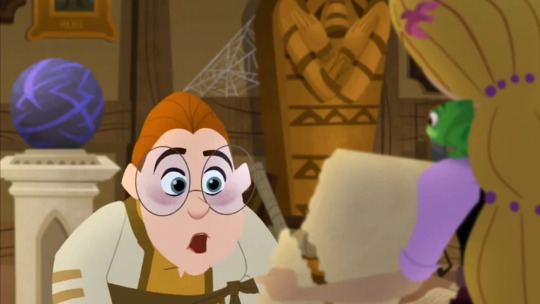
Rapunzel shows the incomplete, and ripped, Demantis Scroll to Calliope in the episode "Keeper of the Spire"
Building off last month's post, I thought I'd focus on one character in the Tangled animated series in particular: Calliope. She is a keeper of the Spire, a closed-off museum of sorts, who is pretentious and arrogant. But, there is more than meets the eye, which I'll examine in this post, and talk about the role of curators, the difference from archivists, and other related topics, going beyond my past post on the subject.
Reprinted from my Wading Through the Cultural Stacks WordPress blog. Originally published on May 17, 2023.
On the surface, it seems that Calliope (Natalie Palamides), who debuts in the episode "Keeper of the Spire", is full of herself, annoying Rapunzel (Mandy Moore), Eugene (Zachary Levi), Lance (James Monroe Iglehart), and Cassandra (Eden Espinosa), who are hoping to get information on the Demantis Scroll. She also can do magic tricks, as a former street magician, and has a messy library in her house with various artifacts. It turns out, spoilers, that she is only the assistant of the actual keeper (Tony Amendola), who put her on a test to see if she was up to the task, and opens the Spire, a vault filled with artifacts. In the end, Raps gets the scroll she is looking for, and all seems well, as Calliope is now the keeper and presumably becomes more of a scholar. The real keeper is impressed by her perseverance even in adversity.
She is generally stereotypical, wearing oversized glasses, hair tied back in a bun, and wears beige robes. She later helps Raps and Eugene in stopping Cass from acquiring a specific object from within the Spire. In that episode, "Race to the Spire", Cass wants to acquire a spell that can allow her to control those in the brotherhood, even disguising herself as Calliope to trick Raps, Eugene, and Pascal. Her appearance is somewhat in line with librarians in other series, often portrayed as elderly people with glasses. Her hair being tied up could be a hint that she is a spinster, i.e. usually uptight old women who are "sexually undesirable", and rule-mongers, with conservative dress. It is something associated with fictional librarians.
However, in some other ways she goes against stereotypes of fictional librarians as she is not male, with a long beard, or with glasses, even though she is White, common of librarians in animation. These stereotypes are also manifested in elderly White women librarians. While saying all of this, she is not a librarian, and is more of a curator. Specifically, she is described as a keeper in the aforementioned two episodes she appears in. What I wrote about the keepers in my article about Recorded by Arizal is relevant here:
Keepers are curators, guardians, protectors, custodians, caretakers, or guards who visually lay hold onto something, like records, similar to roles that archivists have....the International Council on Archives and archival scholars like Alan Bell, Caroline Brown, Terry Eastwood, and Terry Cook have stated that the words recordkeeper and archivist are synonyms. After all, archivists are more than what Webster’s New World College Dictionary defines: people in charge of archives where public records and documents are kept.
Her name, Calliope, is likely a reference to the Greek mythological muse who presides over epic poetry and eloquence, with so-called harmony coming from her voice. Her character, however, is the opposite of this, or at least it seem that way at first. As noted on her Wikipedia page, in the aforementioned mythology she had two famous songs (Orpheus and Linus), said to be the wisest of the Muses, but also the most assertive, defeated daughters in a singing match. Otherwise, the page notes that she is often shown with a writing tablet, carrying a book or roll of paper, even wearing a gold crown. In his 2020 "Mother of Muses" song, Bob Dylan declares he is "falling in love with Calliope", and says she "doesn't belong to anybody".
Since Calliope becomes the Keeper, she is undoubtedly a curator, what the Dictionary of Archives Terminology calls "the administrative head of a museum or collection". She is not, however, an individual responsible for the "oversight of a collection or an exhibition", the other definition in the dictionary. As the one-and-only Keeper, i.e. effectively a solo archivist or lone arranger, although she has no formal training, she is also responsible for "appraising, acquiring, arranging, describing, preserving, and providing access to a collection of original documents", a manuscript curator, on one level or another.
© 2022 Burkely Hermann. All rights reserved.
Continued in part 2
#calliope#tangled#records management#curators#definitions#bob dylan#keepers#recordkeepers#lone arrangers#solo archivists#cassandra#mandy moore#eden espinosa#tony amendola#natalie palamides#arrogance#pop culture#reviews
1 note
·
View note
Text
Knowledge, Classification, and Ledo's Record-Informed Epiphany in "Gargantia" [Part 2]

Chambers begins playing the classified record
The video Ledo watches shows something shocking: the Hideauze are humanoid and were originally human! This causes Ledo to come to the realization that he has been killing fellow humans. He regrets his genocidal actions and questions whether it is even worth fighting against the Hideauze at all. Undoubtedly, there is more trauma for Ledo, heightened when he holds the flesh of the dead squid in his hands. Even with this new information, which Chambers had claimed was "manipulated" by the "enemy", without providing any evidence, Chambers continues to argue for the just-ness of a war despite it being based on lies. It is later revealed, when Ledo seems to meet Kugel, his former commander, that upper echelons of the Galactic Alliance knew all along. However, they never informed the soldiers battling on the front lines. Without giving any more spoilers, Ledo remains on Earth without returning to space, with records causing an epiphany and causing the remaining Galactic Alliance mindset of fighting against the enemy no matter the cost to fall away.
Reprinted from my Wading Through the Cultural Stacks WordPress blog, where it was published on June 14, 2023.
All in all, although records, and their concealment, are a crucial part of the series, especially in Ledo's epiphany of sorts, reviewers don't mention them in their publications. However, they note how the premise feels "arbitrarily constructed" at times, while depicting intricate details successfully at other points, as part of a successful sci-fi story, that there is violence throughout, and that the production values are superb in many ways. [3] The focus on how classification of records can impede knowledge is something I haven't seen in an anime or animation series to date. The closest parallel I can come to is the archival work, of sorts, by Ura in Pale Cocoon. What happens in Gargantia is different in many ways, even from the depiction of classified records in The Crown or the classified archives of the CIA shown in an episode of Alias, as Archives in Fiction once noted.
For one, it shows the efforts the Galactic Alliance went to in order to conceal the truth. If the soldiers on the front lines knew that they were fighting humans, or more accurately humanoid descendants, there would likely be resistance, perhaps even mass desertion. So, their solution is to distort the reality, paint the "enemy" as a lesser lifeform, something that can't even think, when the Hideauze are just as smart as humans, although they might not seem that way. Secondly, the fact that Chambers immediately determines that the classified record is manipulated because it contradicts Alliance records shows how deeply entrenched his programming is with propaganda from the Alliance itself! As it has been said many times, no program, algorithm, technology, code, or anything is neutral. Rather, it is shaped by human perceptions. That is the case for Chambers.
What Ledo experiences is not a form of record erasure, alteration, or deletion, but, rather, a form of record concealment. The record he views does not have any completeness, as it is choppy, and the video is distorted. The latter may be part of the reasoning what Chambers claimed the records were manipulated, thinking it wasn't accurate. To Ledo, and the viewer, it appeared to be accurate. Furthermore, it was reliable in the sense it was "created by a competent authority, according to established processes", as it was a Galactic Alliance record. It is surprising it was left behind and not hidden. Perhaps the thinking was that it would never be found, so there was no need to destroy it, and it had lost all usefulness to them.
There is no doubt that the record is trustworthy, authentic, and genuine. Chambers clearly believes that the record is counterfeit, i.e. an item which is "falsely represented as the thing it imitates", an "unauthorized copy presented as an authentic original", or something worse: a forgery. Of course, Chambers likely has different definitions than the Society of American Archivists' Dictionary of Archives Terminology. The record, presented in the form of a degrade tape, is further confirmed as genuine by the testimony of "Kugel".
In the end, while there are no characters like Jocasta Nu in Star Wars or Nathan's grandfather in Stretch Armstrong, records remain an important part of the story in Gargantia, serving as an important plot point in more ways than one. There is no storage of records akin to R2-D2. Instead, there is recovery of lost data and records that were left behind/discarded, in an attempt to twist how people viewed the present. That is something unique to this series, as I can't think of any other series off hand, apart from Pale Cocoon, which focus on data recovery, and have declassification as something commanded by the protagonist. In that sense, Gargantia is different. That's all for this time. Until the next post sometime next month, likely on a different topic. Let me know in the comments what you think.
© 2022-2023 Burkely Hermann. All rights reserved.
Notes
[3] See, for example, reviews in THEM Anime Reviews and Anime News Network (also here). As a warning, the sixth episode has transphobic themes which may offend viewers.
#gargantia on the verdurous planet#suisei no gargantia#gargantia#declassified#declassification#classification#star wars#stretch armstrong#r2 d2#definitions#society of american archivists#pale cocoon#the crown#alias#mecha#scifi#jocasta nu
0 notes
Text
Knowledge, Classification, and Ledo's Record-Informed Epiphany in "Gargantia" [Part 1]

In the first episode, Ledo, along with other recruits, is subjected to a propagandistic presentation about the Hideauze, with the Vitruvian Man front and center, symbolic of the workings of the universe.
In the past, I've briefly mentioned Gargantia on the Verdurous Planet, a mecha science fantasy anime currently available on various streaming platforms, [1] noting how Nathan's grandfather in Stretch Armstrong was like Doctor Oldham, the sage in Gargantia, or a fan fiction written by my friend which focuses on characters within Gargantia and other series, with scenes set in archives, and featuring archivists. However, I had forgotten how much records are a central part of the series! They are even more of a uniting theme in the show than any of the brief library scenes, which I've written about on my sister blog. [2] In this post, I'll examine those moments in the series, while connecting them archives and records management concepts.
Reprinted from my Wading Through the Cultural Stacks WordPress blog, where it was published on June 14, 2023.
The series begins with an explanation of the war between humans, fashioning themselves as Galactic Alliance of Humankind and the Hideauze, with the latter squid-like features said to be the enemies of human beings. Ledo (voiced by Kaito Ishikawa), the show's protagonist, is an ensign within a mechanized machine also known as "Chamber", believes this narrative and is a loyal footsoldier who is about to end his tour of duty. After a hasty battle with the Hideauze, which ends in defeat, a retreat, and much loss of life, he is thrown through a wormhole. He finds himself on a salvage ship in Earth, awaking six months later. The rest of the series follows his attempts to get in contact with the Galactic Alliance Fleet while learning more about Earth and why it ended up the way it did.
In this way, records are a central part of the story. Ledo relies on Chamber to translate human language into something he can understand. Colored by his own perceptions informed by Galactic Alliance propaganda, he looks critically at the society which has clustered around a floating city of sorts composed by inter-locking fleets. He even wonders why the "weak" in Gargantia are helped, when they would be culled as "unnecessary" in his society. This comes to a head in "The Flute of Recollection" when Amy (voiced by Hisako Kanemoto), the girl who Ledo temporarily kidnapped in the first episode, brings him to visit the so-called "Sage" of Gargantia: Oldham (voiced by Hideyuki Umezu). He has a library atop a tower on one of the ships, with books of different kinds. Ledo asks about supposed "inefficiencies" in Gargantian society and hopes for information about how to get into space. Oldham tells him that very little history has been kept, with only limited information remaining about space travel. This leaves Ledo dispirited, but he continues his quest.
He learns that the squid in the ocean, known as whalesquid, are just like the Hideauze, becoming a pariah for killing one. While his mindset, informed by Galactic Alliance propaganda, he remains committed to wiping out these squid. That is until the episode "Deep Sea Secret". In the episode, after going through the squid nest, decimating all in his wake, he comes across a structure with data disks. When he asks Chambers to show him the record, he is informed it is classified by the Galactic Alliance. He commands Chambers to declassify it, saying he is the ranking officer, and that classification, in this case doesn't matter.
© 2022-2023 Burkely Hermann. All rights reserved.
Notes
[1] Hulu has all of the episodes except the last two OVAs, while Crunchyroll has all of the episodes available. The series, I believe, was formerly available on Funimation. Simply, the series proper was 13 episodes, but there were four OVAs: "Abandoned Fleet" (OVA1), "The Oracle's Altar" (OVA2), "Far Beyond the Voyage Part 1" (OVA3), and "Far Beyond the Voyage Part 2" (OVA4),
[2] Specifically, I've noted that Oldham is an information provider by serving as a medical doctor and librarian, "working out of his own library atop a spire, equivalent to an ivory tower" and noted an OVA episode where another library is shown. I had even said that he had the appearance of "an elderly White man" but later realized he is a Japanese man, as is clear from his voice actor, along with inferences from the show. I also noted that he does fulfill his library duties while serving a patron, "although not in the way we usually envision" and said that his depiction goes beyond stereotypes.
#gargantia#propaganda#declassification#classification#squid#scifi#anime#society#oldham#ledo gargantia#records management#archival science#archival studies#archives#archival#suisei no gargantia#gargantia on the verdurous planet
1 note
·
View note
Note
have you played hollow knight? there is a character who owns a building called the teacher’s archives, and a (spoiler) character who worked under her and presumably was an archivist.
I haven't played that, but I recall a post by Sam Cross about it, but I will definitely have to check that out.
0 notes
Text
It makes my head hurt: Analyzing terrible records management in "Tangled"
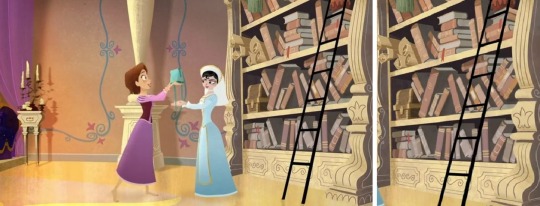
As I said on Twitter, when I posted these images (which I've combined here for your benefit), "Rapunzel, I know you love Cass, but can you organize your scrolls, books, and artifacts (?) correctly? 'Cause this looks really bad. What's your organizational system here? Stuff is gonna get lost, I guarantee it."
Ever thought, what would happen if you stuck a bunch of valuable scrolls in a wall, inside a big hallowed out tree, and left them there for thousands of years? Well, the Tangled animated series, called Tangled: The Series and Rapunzel's Tangled Adventure beat you to it, ha. The records management in this series really makes my head hurt. When re-watching this series I wondered, again, where the archivists, or librarians, are. I held out some hope, however little, that they re-organized records and hired some archivists. In this post, I'll review notoriously awful records management in this animated series, focusing on two episodes, connecting to actual preservation of scrolls, and other paper documents, by archivists, conservators, and others, and information about trees, especially dead ones, to give further context.
This post was originally published on WordPress on Apr. 12, 2023
In the past, I've noted how the abandoned scrolls inside a tree shown in the episodes "Rapunzel and the Great Tree" and "Islands Apart", which are organized but no archivist is in sight. [1] These scrolls are sitting around a tree, and there seems to be no set organization system, and writing that "sticking scrolls in random wall slots doesn't seem like a good organizational system". I've also pointed out that a well-educated man named Ricky Roxburgh, with a degree from SUNY Albany, wrote episodes for the The Ghost and Molly McGee and the aforementioned Tangled series, both of which contributed to perpetuation of archives stereotypes! Beyond that, the scrolls themselves clearly have value, as there are incantations written on them, but are still within a tree in what could be called scroll boxes, specifically the Great Tree, rather than in a library or an archive.
Specifically, the scrolls, in the episode, [2] are deserted and clearly untended. In the episode it is revealed that it has been millennia since the tree was a sentient being, then corrupted by evil sorcerer Zhan Tiri, and then put in a sort of stasis by Lord Demantius who stopped the magic of the tree by using an enchanted spear. Considering that Demantius used magic and science to build machines, capturing evil spirits almost like the ghostbusters, perhaps he installed these scroll boxes? Anyway, by the Rapunzel (Raps), Cassandra (Cass), and their compatriots arrive there, no one is there to help them. No one warns Raps to not use an incantation which unleashes death and decay to anyone around it, and changes her "seventy-feet long hair from blonde to black, and her eyes from green to black"! This incantation almost kills her, and she is only helped/saved by her friend, Cass.
There is more to the scrolls than this. Not only is there a scroll for ancient, and magical, spell that grants "miraculous, life/light-based powers to heal minor injuries and even return those to life" which can only be activated by singing it, but there are many other scrolls. Presumably, all these scrolls are other incantations. This spell is more directly associated with Raps (Mandy Moore), who is the manifestation of the Sundrop Flower, while the other spell I mentioned in the previous paragraph is associated with the Moonstone.
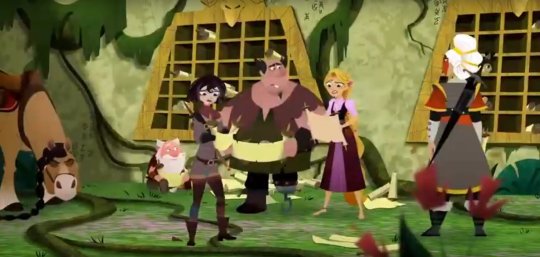
So many disorganized scrolls, which I noted on Twitter. But, why? And who put the scrolls there? This is never answered.
These scrolls are put in an even worse position when the tree, a magical and ancient place, collapses after Raps uses the death and decay spell. However, this room makes a reappearance later in the series. At the end of the episode "Islands Apart", Cass (Eden Espinosa) and the evil blue fairy, the Enchanted Girl (a manifestation of Zhan Tiri) visit the tree looking for scrolls in hopes of unlocking the Moonstone's full powers, but find these scrolls have been destroyed. It is then that the Enchanted Girl mentions the Demanitus Scroll, and Cass realizes she needs to go to Corona to retrieve it. At the same time, neither of these characters seem to care about the scrolls, which are in worse shape, lying scattered across the ground due to the tree's collapse.
The aforementioned Demanitius Scroll has an important role in the series, as it is an ancient parchment which outlines the abilities of the Sundrop and Moonstone, giving "instructions of how to wield a supreme power of unknown heavenly origin". The scroll, written by Demanitus, was later ripped apart and hidden in different parts, since the valuable document would be dangerous if it fell into the "wrong hands". Raps goes on a quest to find the missing pieces in the show's second season, along with her companions. The scroll, in the right hands, however, can be "used for good". It is later examined, in the episode "Cassandra's Revenge", by Varian (Jeremy Jordan), who finds a third incantation, allowing Cass to "control the Moonstone and create a fortress" in the place where Raps had been imprisoned in the infamous tower. He later finds another incantation and transcribes it before the scroll is destroyed, allowing Raps to "recite it and unlock the full powers of the reborn Sundrop Flower".
With this summary of what happened in the two episodes, from which I excluded some details so as to make sure it was not too long, it brings me to preservation of actual paper documents by archives and other institutions. Sometimes loose items, like a map or brochure can be repaired with "conservation-grade double-sided tape" but there's also pamphlet binds, repair of pages with heat-set tissue, and inside hinges. At other times, new spines are added to books, while original and damaged ones are removed. There are specific and specialty conservator labs, with repairs to documents by conservators, reference staff, and others with experience with rare materials or even interns with work at libraries and archives. [3]
The Library of Congress (LOC) has a whole division that focuses on this, called the Preservation Research and Testing Division or PRTD, which works with the Conservation Division, as preservation is a major priority for the library. The PRTD, which undertakes research to "advance and support Library preservation", even has a pigment reference collection used to "gain historical understanding and scientific information about the materials." The division often has projects which evaluate "condition of fragile and damaged items and proposing preservation actions". There are also machines, like the BC100 which takes extensive photos of "brittle books and newspapers for archival purposes." [4] Imagine if something like that was used on any of the scrolls inside the Great Tree or the Demanitius Scroll? Both would need to have restricted access if anything equivalent to them existed in archival collections, with extensive conservation care.

Two scrolls from the Dead Sea Scrolls lie at their location in the Qumran Caves before being removed for scholarly examination by archaeologists. Original image on Wikimedia, reprinting an image from an 1959 Israeli book.
This is another way that the Great Tree is a terrible place to store documents. What kind of ways does the tree "properly manage temperature, humidity, and other conditions" which can prevent "damage to materials" [5]? If that isn't enough, there are no organization of the scrolls. There is no method shown for protection of fragile and vulnerable items, i.e. the scrolls. The scroll boxes, as they could be called, are nothing akin to boxes used by LOC to store valuable records, nor any stabilization statements or deacidification conservation treatments. The latter can be used on records like older comic books, for example. There are further issues if the paper is acidic, and yellows over time, as it can decompose more, and faster, than neutral paper. None of this was considered by whoever put the scrolls in boxes, of sorts, within the tree. [6]
The LOC also notes that paper of a good quality which is "stored in good conditions," i.e. cooler temperatures with 30-40% relative humidity can last a long time, perhaps "even hundreds of years." Is this the case with the tree? Well, another paper from LOC adds this:
"Good storage significantly prolongs the preservation of paper materials and includes…A cool (room temperature or below), relatively dry (about 35% relative humidity), clean, and stable environment (avoid attics, basements, and other locations with high risk of leaks and environmental extremes)…Minimal exposure to all kinds of light; no exposure to direct or intense light…Distance from radiators and vents…Supportive protective enclosures*…Unfolded and flat or rolled storage for oversized papers[, and] individual/isolated storage of acidic papers to prevent acids from migrating into the other works on paper…Supportive protective enclosures include…document boxes…and polyester film sleeves that are stiff enough to adequately support the paper(s) within"
Now, it has been shown that trees across the world strive to "maintain a near-constant temperature of 70 degrees in their leaves". It has also been shown that trees can have a cooling effect. But what about inside a hollow tree? Can it still regulate its own temperature? They can regulate their own internal temperature and have homeostatis, i.e. keeping temperatures "mostly stable no matter what's going on outside", although they regulate temperatures more with leaves.
In some ways they can. In fact, a 2016 study by Chris O'Connell and Gunnar Keppel in Wildlife Biology, an open-access, and high-quality, scientific journal, stated that tree hollows can be crucial habitats for fauna and even buffering "ambient environmental conditions". This means that these hollows can provide stable microclimates, even "maintaining lower temperatures and higher humidity during the day and higher temperatures and lower humidity during the night." However, the Great Tree in Tangled is dead, and tree hollows are a cavity in a living tree, as the tree was a living organism, but became dead over time. Instead, the tree is almost equivalent, in some ways, to coarse woody debris or large woody debris.
More than that, dead tress, generally, can be teeming with life, playing a vital role in "lifecycles of hundreds of species of wildlife, providing a place to nest, rest, eat and grow". They can provide excellent habitats, benefit the environment, shelter, regenerate soil, or provide additional resources to an ecosystem. [7] This is clear from the aforementioned "Rapunzel and the Great Tree" episode, where the inside of the tree is teeming with life. However, by the "Islands Apart" episode, this is likely no longer the case, especially due to effects from Raps' death and dying spell, although the tree would continue its decomposition into the ground around it, but perhaps faster than before.
This article took a direction I did not originally plan for when I started writing it, but that made it all the more fascinating! I am no expert in trees, nor in preservation (or conservation) of documents, by any means, but this does give me a bit more context and analysis than any of my previous posts focusing on or mentioning this series. I had originally intended review all the episodes with themes about records and archives in one post, but decided it would make more sense to divide them into various posts. Those will follow later this year. As always, comments and suggestions are welcome.
© 2022-2023 Burkely Hermann. All rights reserved.
Notes
[1] The show has at least four episodes with archivy themes: "Keeper of the Spire," "Rapunzel and the Great Tree," "Islands Apart," and "Race to the Spire." On an additional note, I mentioned the series in passing in posts here and here.
[2] On Disney+, the episode "Rapunzel and the Great Tree" is divided into two parts, each of which is 25 minutes long. There is also another magic tree in the series, the Eternal Tree which is used to order to open a portal and free Zhan Tiri.
[3] See Tydall, Lily. "Librarians Learning Conservation: My 10 Weeks as the First General Collections Conservation Section Intern." Guardians of Memory. Library of Congress, Aug. 29, 2022.
[4] See Villafana, Tana. "Paints and Pigments – When Art and Science Combines". Guardians of Memory. Library of Congress, Aug. 20, 2022; Hasbo, Beatriz. "Exploring Collections Management and so Much More: a Summer Experience at the Library of Congress." Guardians of Memory. Library of Congress, Aug. 18, 2022; Chaletzky, Aaron D. "Preservation Intern Profile: Brandon Mack." Guardians of Memory. Library of Congress, Aug. 11, 2022.
[5] For information on LOC doing this, see Overstreet, Anna Katherine and Alexandra Ptacek, "Climate Correlation: Environmental Monitoring at the Library of Congress." Guardians of Memory. Library of Congress, Aug. 1, 2022.
[6] See Long, Leslie and Lily Tyndall, "Box Making Activities in the General Collections Conservation Section." Guardians of Memory. Library of Congress, Jul. 28, 2022, Tyndall, Lily, "Live Long and Repair: Caring for the Library of Congress’ Comic Book Collection." Guardians of Memory. Library of Congress, Jul. 21, 2022, and Shovlin, K.F. "When the Paper Fails the Test." Guardians of Memory. Library of Congress, Jul. 14, 2022.
[7] See "Tim-ber? … Not So Fast: The Important Role of Dead and Dying Trees | EarthCare Northwest", Seattle Audubon Society, Mar. 7, 2022; Miranda, Tango. "Dead Trees and Their Role: A Naked Encounter." Age of Awareness. Medium, Dec. 8, 2020; "Snags: The Life-Affirming Role of Dead Trees." Blue Thumb, Apr. 6, 2022; Wiebe, Shiela. "Why do we leave dead trees in the forest?" Ontario Parks, Nov. 12, 2021; Wuerther, George. "The ecological value of dead trees." The Wildlife News, Dec. 20, 2018; Bundell, Shamini and Nick Petrić Howe, "Dead trees play an under-appreciated role in climate change." Nature, Sept. 1, 2021 for more information.
#tangled#tangled the series#rapunzel#cassandra#records management#archives#sundrop#moonstone#rapunzel tts#rapunzel tangled#dead sea scrolls#scrolls#pop culture#reviews#trees#tree caverns#nature#environmentalism
3 notes
·
View notes
Text
Archivists on the Issues: Fictional Archivists Out in the Open [Part 2]
Continued from part 1
Archivists on the Issues is a forum for archivists to discuss the issues we are facing today. Today’s post comes from Burkely Hermann (me), Metadata Librarian for the National Security Archive and current I&A Blog Coordinator. There will be spoilers for each of the books, animated series, films, and other media he will be discussing. It was published on the Issues & Advocacy blog on March 8, 2023 and will be published on my Wading Through the Cultural Stacks WordPress blog in late September.
youtube
However, very few, if any, of these archivists have any professional training. Furthermore, some are archivists in name only, or are confused with librarians. Current fictional depiction of archivists is not very positive. After all, there are even books that depict archivists are villains, or others in which archivists which rarely appear. [2] While there are recent webcomics like Vowrune, Fluidium, and Don't Look at the Sky which feature archives, none of them depict archivists. There has not been, that I'm aware of, any characters which accurately depict an archivist. Surely, there is prevalence of archival source material in "popular recent true crime docuseries" like The Keepers, The Jinx, and Making a Murderer as Cate Peebles noted in 2018, but no archivists.
Often scholars have focused on the role of Star Wars when it comes to depictions of archives, and archivists. [3] Others, such as Gianni Penzo Doria, director of State Archives of Venice, have gone broader, noting archival themes in many films, such as Brazil (1985), Blade (1998), Julie & Julia (2009), Fail Safe (1964), Philadelphia (1993), and Erin Brockovitch (2000). Doria further argued that role of the archivist is lost in common perceptions, with "boring old stereotypes" and "poor visibility" of archives, with archivists becoming caricatures, rather than protagonists. He also states that in film archives are only respected when they are seen as a "sacred place" which preserves "memory of its creator and guarantees accountability and citizens’ rights", but that archivists are not shown in those films. [4] In the preface to Doria's book, Micaela Procaccia, president of National Association of Italian Archives (ANAI), urged archivists to make an effort to "spread awareness of the central role of their work and their professional skills in society." His words ring true.
Others have rightly noted that many of the depictions of archivists "reinforce stereotypes that surround the profession", including in National Treasure. Nuances in the archival field are often lost in popular depictions. Kyle Neill, a Senior Archivist at the Peel Art Gallery, Museum and Archives, has focused on this in his posts on such depictions over the years, as have others. [5] Additional scholars have focused on reel archivists and themes of records, and archives, in espionage fiction. In the case of the former, this included arguments that film images of archivists can be negative to archivists and a risk to the profession, causing negative effects on archival professional identity and may result in potential researchers having "negative connotations about archives and archivists." For the latter, in such fiction, information is power, with stories often stating that documentation can reconstruct someone's personal identity and career, and compiling a large amount of information to learn about their enemy, while events and personal information are intertwined. Unsurprisingly, in such stories, archives are shown as repositories of institutional memory, even if they do not focus on the dilemmas that archivists face when torn between their duty to their employer and their duty to society. [6]
Additional scholars have reviewed films, novels, and TV series, finding common themes. Karen Buckley, in fall 2008, argued that these popular culture medium had stories, with archives and records, which equated protection of truth to protection of a record, made archival experiences interior and archival spaces closed, had lost or buried archives, or stated that information within records centers around "the search for self or truth." This inevitably leads into a strong division between real and fictional archives. [7] Arlene Schumland went further, studying images of archives and archivists "based on a reading of 128 novels", examining how these novels disseminate and perpetuate "many stereotypes of the archival profession." Others followed suit, examining issues surrounding the "image and stereotypes of archivists as presented in films", and arguing that archivists in those films "follow generally accepted stereotypes."
While archives, and archivists, continue to be portrayed poorly, and inaccurately, in fiction, in Star Wars and beyond, it remains important for archivists to tell the truth about the profession. This can, and should, go hand-in-hand with fights for unionization, better working conditions, and recognition, in order to make clear that archival work remains vital in this day and age.
© 2022-2023 Burkely Hermann. All rights reserved.
Notes
[2] This includes archivists in the webcomics Heirs of the Veil and Leif & Thorn. There's also a librarian named Emily Quackfaster who appears in an episode of DuckTales but works in a library. If you squinted, you could see Theoda and Pothina, who are two researchers who work at the Savior Institute, in Cleopatra in Space, as archivists, or George and Lance in She-Ra and the Princesses of Power. There's also Mystique, otherwise known as Raven Darkhölme, who lost contact with her friend Destiny (also known as Irene Adler), who she found "working as an archivist in the Alamogordo nuclear research facilities in New Mexico." Additionally, a solo archivist / lone arranger named Filis appears in bonus material for the live-action TV series, Ultraman Taiga, while multiple episodes of Vatican Miracle Examiner feature an archivist.
[3] Personally, I have been focusing on Star Wars more myself, with recent posts positing that R2-D2 may be an accidental archivist, restricted records and record seizure in Star Wars Rebels, and an upcoming post about an archivist, in name only, in Star Wars Crimson Reign. There were also category on Wookieepedia for "archivists" in Star Wars, although it is hard to know how many are actually archivists.
[4] Doria, Gianna Penzo. Asterix, the Others, and the Archives: The Cinema perception of the archival profession (Bolgana, Italy: Filodiritto, 2022), 7, 16, 30, 32-39, 46-47, 52-58, 76.
[5] "Archivists in the Movies." Dispatches from the Field, Aug. 4, 2006; "Thankful Archivist." New Archivist, Nov. 24, 2009; Eagan, Daniel. "Film vs. Digital: Archivists Speak Out." Smithsonian, May 2, 2012; "Badass Archivists in Television and Movies: a Really Short List." The Society of American Archivists - UW Madison Student Chapter, Oct. 27, 2013; Lucy, Catherine. "A Critical Response to The Archivist (2015)." Solo, May 3, 2018. There are additional archivists who focused on archival themes in Paddington (2014) and use of archival records in comic books.
[6] Anne Daniel and Amanda Oliver. "Seeking an Identity: The Portrayal of Archivists in Film." Archives Society of Alberta Conference, Spring 2014; Gillis, Peter. "Of Plots, Secrets, Borrowers, and Moles: Archives in Espionage Fiction." Archivaria 9 (1979-80): 1, 5-8, 12-13. On page 13, Gillis writes that archivists have to temper a desire for secrecy and suppression with "the needs of research and scholarship".
[7] Buckley, Karen. "'The Truth is in the Red Files': An Overview of Archives in Popular Culture." Archivaria 66 (2008): 95-123.
#recorded by arizal#vowrune#fluidium#don't look at the sky#webcomics#archives#archival#archival science#archival studies#star wars#national treasure#stereotypes#brazil film#blade film#julie & julia#fail safe#philadelphia film#erin brockovich#pop culture#reviews#ducktales#spy fiction#ultraman taiga#sw rebels#star wars rebels#r2 d2#george and lance#she ra netflix#Youtube
0 notes
Text
Archivists on the Issues: Fictional Archivists Out in the Open [Part 1]
Archivists on the Issues is a forum for archivists to discuss the issues we are facing today. Today’s post comes from Burkely Hermann (me), Metadata Librarian for the National Security Archive and current I&A Blog Coordinator. There will be spoilers for each of the books, animated series, films, and other media he will be discussing. It was published there on March 8, 2023 and will be published on my Wading Through the Cultural Stacks WordPress blog in late September.
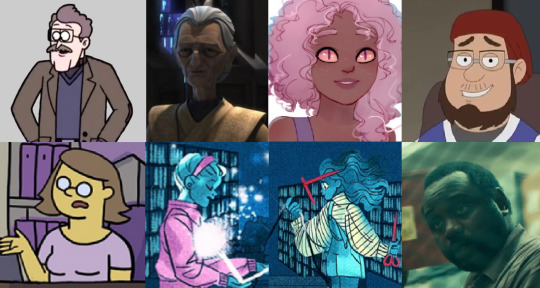
Eight archivists-of-sorts in fiction. Top row, from left to right: Archie the Archivist (Regular Show), Jocasta Nu (Star Wars), Sunati (Always Human), Russ (Be Cool, Scooby Doo!). Bottom row from left to right: Unnamed archivist / records clerk (My Dictator Boyfriend), Atropos (Lore Olympus), Clotho (Lore Olympus), and Clark (Joker)
In January 2018, Cate Peebles wrote about examples of archives in popular culture, specifically in true crime documentaries. In her post, on this blog, she argued that archivists are missing in "moments of recognition" and said that representations of actual archivists are "few and far between". She concluded that no popular image of an archivist exists, but that archivists are "more present than ever" even if unseen, adding that "without records and their keepers, there are no stories to tell." In this article, I'd like to highlight some examples of fictional archivists that I've come across through the years, especially since starting my WordPress blog on the subject.
For one, there are some characters who who merge characters of archivists and librarians. This includes a reference librarian who manages a Yale University Library room which combines elements of archives and libraries into one institution in Can You Ever Forgive Me? (2018) and a character who is almost an archivist, named Archie the Archivist (voiced by John Cygan) in Regular Show. In the latter case, Archie works in a library and becomes a guardian to protect analog data, which could have some parallels to archivists as keepers of information.
Similarly, there's Madame Jocasta Nu in Star Wars, specifically in Attack of the Clones and the Star Wars: The Clone Wars animated series. She is played by Alethea McGrath in the film and voiced by Flo Di Re in the animated series. Madame Nu is described as a librarian and archivist, but seems to manage a library-archives hybrid known as the Jedi Archives, within the Jedi Temple. She is best-known for declaring, in Attack of the Clones, that "if an item does not appear in our records, it does not exist," an arrogant and untrue statement which ignores reality of archives as memory institutions and their role in society. Madame Nu differs fundamentally from the unnamed librarian in the dark, haunting Thatcher Memorial Library shown in a scene of Citizen Kane (1941). The librarian in the latter has been described as one of the world’s meanest archivists. Played by Georgia Backus, she has her hair tied up in a bun and has "an intimidating stare on her face", acting as a "real dragon lady at the gates of knowledge." This is not the type of archives you want to go to! It is not the image which should be projected.
There are various archivists, of sorts, in other media. For instance, in the webcomic, Always Human, Rae, a friend of the protagonist, Sunati, dreams of becoming an archivist and fulfills this dream during the run of the comic. More directly, an episode of Be Cool, Scooby-Doo!, entitled "Silver Scream", features Russ, a young film archivist who works in a film archive room and is a bit eccentric. Other archivists appear in issues of the popular webcomic Lore Olympus in 1980s style dress, helping characters who request records about their past memories, or in the webcomic My Dictator Boyfriend. In the latter case, the archivist/records clerk is manipulated to write a birth form for the ruler's wife, Anna, even though the son isn't even born! [1]
There are other prominent depictions. For one, there is a records clerk, named Clark (played by by Brian Tyree Henry), who brings out a medical hospital record for Arthur Fleck in Joker (2019). However, Fleck, who later becomes the Joker, steals the record from the clerk because he hasn't filled out the appropriate paperwork to take the file with him. Then there's the well-known depiction of a classy archivist named Abigail Chase (played by Diane Kruger) who appears in National Treasure (2004) and National Treasure: Book of Secrets (2007). It is a depiction which has been oft discussed by archivists. Archivists also make an appearance in former webcomics like Power Ballad, and currently running ones like Brimstone and Roses.
There are many more examples, like supposed newspaper archivist (and former newspaper reporter) in the animated series, Stretch Armstrong, who has a newspaper archives in his basement. He declares in one episode, "some say I’m packrat, archivist I say!" Even The Simpsons has a character who runs the Springfield Historical Society, in the episode "Lisa the Iconoclast" which could be called an archivist. Rapunzel's Tangled Adventure, otherwise known as Tangled: The Series, features, along with other archivy themes, a keeper of a museum, known as The Spire, named Calliope (voiced by Natalie Palamides). She is a scholar who does magic tricks and has a messy library. Most recently, a character named Arizal (voiced by Christine Marine Cabanos) is the protagonist of Recorded by Arizal. She puts together vlogs explaining why she wants to be a record keeper, often another name for an archivist.
© 2022-2023 Burkely Hermann. All rights reserved.
Continued in part 2
Notes
[1] Hermann, Burkely. "Libraries, records, and Kore: Archives on Mount Olympus." Wading Through the Cultural Stacks, Nov. 28, 2020; Hermann, Burkely. "Popular culture and the duties of archivists." Wading Through the Cultural Stacks, Feb. 27, 2021; Hermann, Burkely. "Evil Anna and How I Learned to Love Archival Manipulation." Wading Through the Cultural Stacks, Apr. 3, 2021.
#regular show#star wars#jocasta nu#always human#be cool scooby doo#my dictator boyfriend#lore olympus#joker film#brian tyree henry#pop culture#reviews#the clone wars#sw tcw#star wars the clone wars#attack of the clones#citizen kane#national treasure#tangled#calliope#stretch armstrong
2 notes
·
View notes
Text
Archivists on the Issues: Popular Culture and the Presence of Archival Limits [Part 2]
Continued from part 1
Archivists on the Issues is a forum for archivists to discuss the issues we are facing today. Today’s post comes from Burkely Hermann (me), Metadata Librarian for the National Security Archive and current I&A Blog Coordinator. There will be spoilers for each of the animated series, films, and other media he will be discussing. This post is reprinted from the Issues and Advocacy blog where it was published on Dec. 6, 2022. It was also published on the Wading Through the Cultural Stacks WordPress on Jan. 16, 2023.
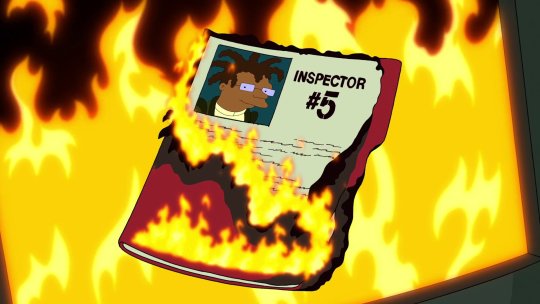
Hermes' file, proving he was the inspector who approved Bender, despite his defect, burns in a fire at the end of the Futurama episode, "Lethal Inspection"
Destruction of archival records, especially those with important informational, historical, continuing, enduring, and evidential value, can constitute an archival limit. It creates a barrier for those wanting to learn more about their family roots, reclaim records about enslaved people, or employ records for other useful purposes. For instance, in an episode of Futurama, the resident bureaucrat, Hermes Conrad (voiced by Phil LaMarr) burns a file from the Physical File Archive, a records center with semi-active records as noted by Brad Houston, Document Services Manager for the City of Milwaukee. The file proves he was the inspector who approved Bender (voiced by John DiMaggio) even though he is defective, since Bender was missing a backup unit.
While Hermes has a logical reason to destroy the records, since he wants to move on with his life and give Bender confidence, his action stands against principles stated in the SAA's stated core values which emphasize access, use, and accessibility. These values also state that archivists are stewards of primary sources, with archival materials providing "digital and physical surrogates for human memory". Even though Hermes is not an archivist, his action runs afoul of promoting "professional excellence" which The American Society for Public Administration encourages in their current code of ethics.
In some ways, when no archivists as present to organize the records, manifested by abandoned archives shown in well-known animated series like Rapunzel's Tangled Adventure or less-known ones like The Bravest Knight, is an example of an archival limit shown in popular media. However, this is unlikely to happen in reality, as even understaffed archives have at least one person managing the records. After all, preservation of records, responsible stewardship, selection of records, service toward "numerous constituencies and stakeholders", social responsibility, and sustainability are emphasized in the SAA's stated core values.
In the end, while archives are often shown stereotypically or confused with libraries in popular media, there is something that can be learned from these depictions, lessons which can inform and improve the archival field as a whole.
© 2022-2023 Burkely Hermann. All rights reserved.
#futurama#hermes conrad#tangled#tangled the series#the bravest knight#archives#archival#archival science#archival studies#society of american archivists#codes of ethics#ethics#saa#bureaucrats#bureaucracy#popular culture#reviews
0 notes